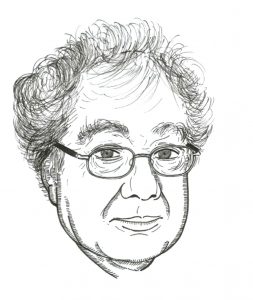Internationalisation Of The Arts And Culture Calls For A New Approach
No comments yetSpring 2006
The international activities of arts institutions are attracting more and more attention. The simplest foreign activity of an arts institution may consist of the artist of artistic company performing abroad, either on their own initiative or upon request. More and more companies, whether large or small, are increasingly being asked to perform at festivals or other events. The fact that this is gradually becoming common practice fits in with the disappearance of every possible barrier to international exchange. There is probably virtually no arts institution which never performs abroad at some time. Of course, there are all kinds of similar phenomena in the opposite direction.
There are special agencies which manage this import and export. Large or small, they are the middlemen between supply and demand, between presenters and producers, or between presenters and presenters. It thus frequently happens that presenters from various countries engage themselves for tours organised by such agencies.
The state of affairs outlined above is not really much more than a simple question of import and export. Strictly speaking, there is no need for the company concerned to do anything besides preparing its performance. The work is primarily aimed at the domestic market. A text or script may occasionally get translated, but generally speaking no effort is required apart from the effort needed to be taken seriously in one’s own country. Besides, regular performances abroad are no automatic guarantee that the company itself makes closer or more artistic international contacts. The most that can be expected is that more markets are opened up for the product supplied by the company, but it is highly questionable whether – and if so, to what extent – the product, the company or the artist are influenced by a different artistic orientation or confrontation.
This kind of cultural exchange will be almost entirely disregarded in a more detailed consideration of the concept of ‘internationalisation’. After all, one may assume that these activities across national borders are a part of the ordinary day-to-day activities of an arts institution.
A dialogue requires modesty
Before an exchange, tour, series of lectures or exhibition abroad comes up for discussion, the first question that has to be answered is whether the foreigners concerned are interested in it: “Do they want it? Are we obliging anyone with it?” Before these questions can be answered, it is first necessary to find out who “they” are. Minimal requirements in this respect are: being able to speak the language of the host country; being familiar with its forms of behaviour and peculiarities; and gauging the interests of both sides by means of personal conversations.
Information can only be transferred after getting to know one another on a personal level, and it should be carried out between the parties themselves: the art gallery owner and the painter, the theatre and the mime company, etc. This demands a thorough and up-to-date knowledge of the entire range of the arts available, both in the home country and abroad. As far as the performing arts are concerned, it is virtually impossible for an ordinary person to keep up with the developments of the past twenty years. It is hardly possible any longer for a local organisation to collect the information required to operate as an international orientation point as well.
People will have to respond to issues relating to the arts, cultural policy and production which arise elsewhere in Europe as well. International cooperation is essential if artists are to continue to have the opportunity to create, perform and innovate.
The development and position of the arts in the old and new Europe are at stake. While the changes in Eastern Europe are primarily related to the rapid depoliticisation of the arts organisation in Western Europe the question is whether the arts are still allowed any moral responsibilities at all. In socialist Europe artists have often had to make use of old forms, while in capitalist Europe the new forms have become the content. The public seems to regard both developments as no more than one of the extras of life. The debate will have to be conducted in St. Petersburg and in Berlin, in Seville and in Brussels, without forgetting Amsterdam either. It will have to be conducted between artists and intellectuals as well as with an interested public.
A market for quality
The economic unification of Europe leads to an increase of scale, uniformity and loss of identity. The disappearance of the ideological barriers in Europe leads to an acceleration of that process.
The market for mass culture is flourishing on an unprecedented scale. There is a risk that it will be confined to a culture of display, art as a means of identification: even more gala evenings, even more festivals, anyway. It is also a pleasant prospect for the growing prestige of the world of industry and commerce.
Essentially this is a suffocating mechanism. As uniformity increases, however, a market for quality will emerge: an international market, stimulated by knowledge and experience from a great many (informal) networks throughout Europe; a market for divergent opinions. As a result of the openness of communication in Europe, the emergence of this international market is more realistic than it has ever been. The opportunities for finding out about divergent opinions outside the official market are greater than they have ever been. An artistic innovation in Reykjavik may catch the interest of somebody in Lisbon. In this way an increasing number of markets will arise, based on informal personal contacts.
European culture
In view of the above considerations, the discussion of the cultural consequences of European unification which has now broken out in Berlin (Berlin Conference 2004) followed by Paris, Budapest and Granada, is more than interesting. A serious attempt is being made to solve this problem by means of foreign cultural policy.
There is apparently a growing awareness that European, federal and other supranational legislation must not be allowed to affect the growing exchange of artists and forms of artistic expression, and certainly not local policies on subsidies and the arts. More – and more intensive – explorations of new challenges, new forms of arts policy are taking place everywhere in Europe.
Informal cooperation agreements between artists and arts institutions cannot yet be recognised in national and local arts policy. The existing range of instruments is simply inadequate. There are thus grounds for expecting the smaller countries, including Lithuania, to pay more attention to this possible strengthening of their cultural position. The opportunities for local and national government to promote cultural exchange in Europe are still too often confined to the well-known range of instruments: every self-respecting city has some international festival of other within its walls.
They are markets for the finished product, no more than showplaces in the worst sense of the word. A festival is regarded as a success if a large audience has come for unique, wonderful or not so wonderful concerts and dramatic performances. The more money is spent on festivals, the greater the threat to the artists’ autonomy. The role of the arts in a city, the cultural significance of the cities, the cultural future of Europe, has more to gain from paying attention to the process than from demanding a product. These processes are less clearly visible. They take place in closed studios, rehearsal rooms, libraries and coffee shops. We are on the eve of the slow but sure collapse of the high quality cultural infrastructure of Eastern Europe. In the near future it will no longer be a source of products for the glamorous and prestigious festivals in the West. All the same, the common future of Europe must be built on intensive international cooperation, and that goes for the cultural field as well.
What can cities and national governments do?
∗ artists in residence
This is one of the simplest ways of promoting contacts between cities. A producer, visual artist, writer, philosopher, journalist or academic from city A spends a number of months, preferably a season or an academic year, in city B on a reciprocal basis.
If a project of this kind is to operate in continuity with a number of cities, it is usually possible to make appreciative use of the local infrastructure: museums, universities, theatres, music academies, etc.
∗ encouraging barters
The arts in the New Member States are comparable to those in Western Europe in many ways. We can learn from one another, we can help one another and the cultural dimension of European integration can be given form. But there is one condition: the foreign currency barrier must be removed. Cooperation on the basis of exchange is one way of doing that. It is not an unfamiliar phenomenon in the international arts world. Co-production often includes cooperation in kind. If there is enough interest, an extension of this practice to many artists and arts institutions in Eastern and Western Europe could result in a “barter bank” for European Cultural Cooperation. It is the city councils who are able to stimulate a process of this kind by adopting an international working group, for example, or sponsoring an experimental project that is confined to three countries for the time being. The expertise of urban financial experts and local semi-municipal loan organisations is essential in this respect.
∗ encouraging person-to-person contacts
A more systematic approach may consist of creating the opportunities for subsidised events or jointly subsidised institutions to exchange individuals, not on an ad hoc basis, but on a more general scale, with the government retaining the ultimate responsibility for evaluating the total policy in terms of its conformity to the principle of reciprocity. A more developed form can consist of an informal cooperation between different (arts) institutions in a number of cities to organise a joint series of readings, forums, study sessions and conferences in which the participation of foreign experts, writers and other artists is encouraged.
∗ subsiding international co-productions and research projects
The opportunities available in the field of international co-production are more difficult, more labour-intensive and more “thankless”.
All the same, this is an area in which the mutual contacts can be evaluated at their true worth, whether the project involves the publication of a book in a bilingual edition, for instance, a music school, a film of television production or even an opera; the highly variegated cultural differences will be evident from the views entertained on each stage of the process of production.
The government could act as one of the financial partners, for example on the basis of the matching fund principle.
∗ adopting networks, both informal and formal
This provides direct support to the vital process of individual cooperation between artists and artists, as well as with arts institutions in different countries.
The preceding remarks indicate that international bilateral cooperation should be founded above all on an international orientation.
When plans are being drawn up, contacts will be sought right at the start with foreign partners, partners from one’s own network who need to be consulted in working out the ideas. The laborious process of preparation – the pre-production stage – cannot begin until after a relatively protracted period of consultation, research and above all the compilation of relevant material on similar plans elsewhere. It goes for this stage too that right from the start only the international scope of the plans will be taken into account in the first instance. Thinking and writing must be done within an international context. A growing number of arts institutions will find that this means: paying more attention to the artistic métier and paying more attention to the process than to the product; more value and less volume; the setting up of coaching and training opportunities for professionals from all over Europe; holding workshops, seminars and classes for and by colleagues; the confrontation of local work with work from abroad for both an informed local audience and an informed foreign audience; facilitating productions which combine interested talent, in so far as that talent is noticed within the action radius of the arts institutions; and generally taking all those initiatives which can contribute to the internationalisation of the arts.
Thanks to Vrienden van Felix Meritis https://vriendenvanfelixmeritis.nl
You May Also Like
Comments
Leave a Reply






